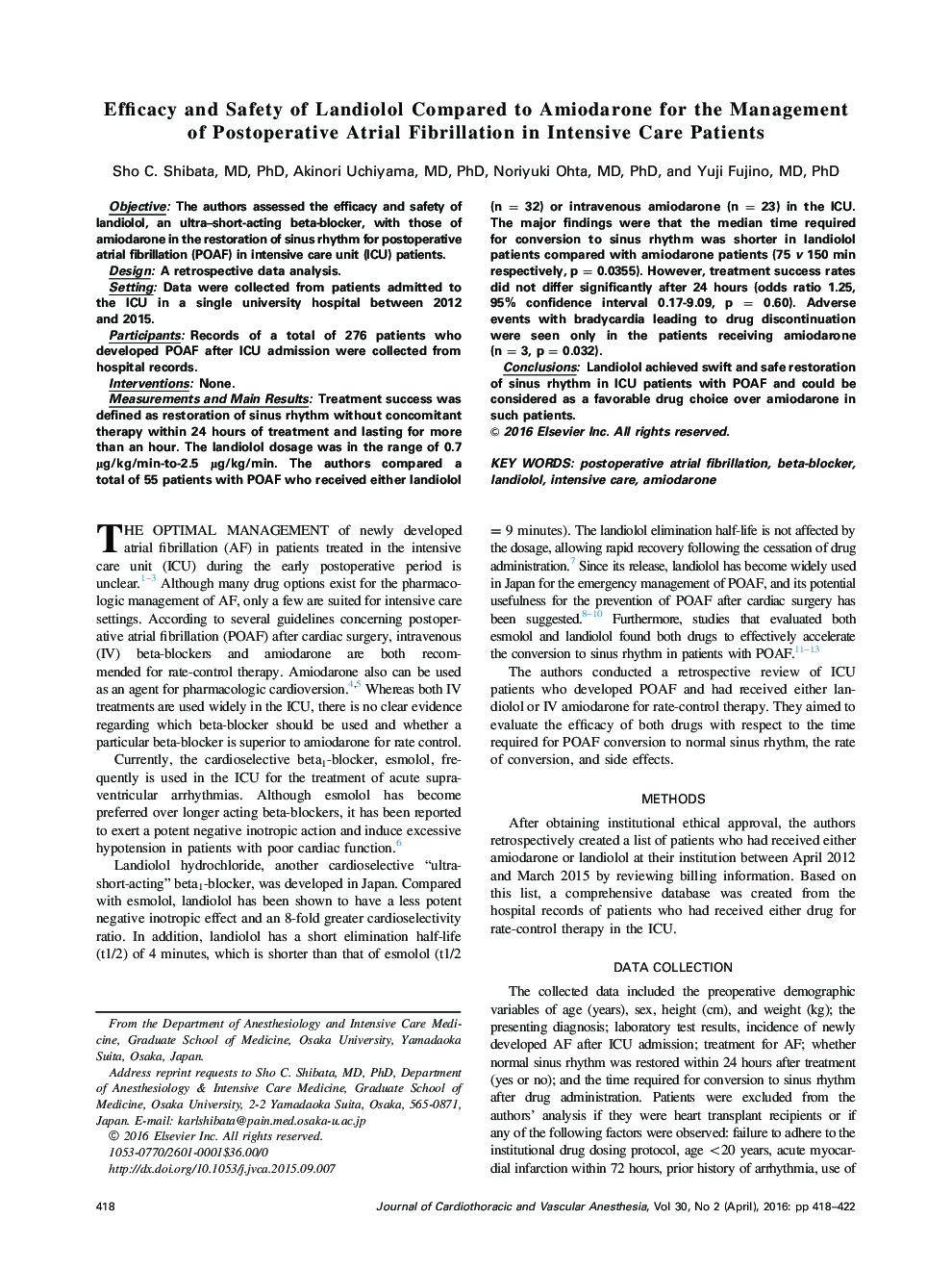| Article ID | Journal | Published Year | Pages | File Type |
|---|---|---|---|---|
| 2758879 | Journal of Cardiothoracic and Vascular Anesthesia | 2016 | 5 Pages |
ObjectiveThe authors assessed the efficacy and safety of landiolol, an ultra–short-acting beta-blocker, with those of amiodarone in the restoration of sinus rhythm for postoperative atrial fibrillation (POAF) in intensive care unit (ICU) patients.DesignA retrospective data analysis.SettingData were collected from patients admitted to the ICU in a single university hospital between 2012 and 2015.ParticipantsRecords of a total of 276 patients who developed POAF after ICU admission were collected from hospital records.InterventionsNone.Measurements and Main ResultsTreatment success was defined as restoration of sinus rhythm without concomitant therapy within 24 hours of treatment and lasting for more than an hour. The landiolol dosage was in the range of 0.7 µg/kg/min-to-2.5 µg/kg/min. The authors compared a total of 55 patients with POAF who received either landiolol (n = 32) or intravenous amiodarone (n = 23) in the ICU. The major findings were that the median time required for conversion to sinus rhythm was shorter in landiolol patients compared with amiodarone patients (75 v 150 min respectively, p = 0.0355). However, treatment success rates did not differ significantly after 24 hours (odds ratio 1.25, 95% confidence interval 0.17-9.09, p = 0.60). Adverse events with bradycardia leading to drug discontinuation were seen only in the patients receiving amiodarone (n = 3, p = 0.032).ConclusionsLandiolol achieved swift and safe restoration of sinus rhythm in ICU patients with POAF and could be considered as a favorable drug choice over amiodarone in such patients.
